

|
|
A Sukesada wakizashi (with 1 & 2 body cutting test)
Nicknamed- “Unrivalled sword for the end of days”
dated: Koto period, (Tenbun 18) 1549 AD
NBTHK Hozon


Swordsmith: Bishū Osafune Sukesada saku (備州⻑船祐定作)
Blade nicknamed: Masse-musōno ken (末世無双之剣) “Unrivalled sword for the end of days”
Location: Bizen
Approx measurements: Nagasa (cutting edge length): 63.9 cm Sori (curvature): 2.3 cm Motohaba (width): ~ cm
Jigane: Itame
Hamon: Gunome-chōji in ko-nie-deki that features koshi no hiraita elements and plenty of ashi.
Nakago: Ubu, two mekugi-ana
Signature: katana, mei; Bishū Osafune Sukesada saku (備州⻑船祐定作) “Made by Osafune Sukesada from Bizen province”
Tenbun jūachinen nigatsu hi (天⽂⼗⼋年⼆⽉⽇‒“A day in the second month Tenbun 18 (1549)”
Cutting test: Kesa-otoshi ichi no dō kewaki-otoshi kono ha nite futatsu-dō otoshi
(袈裟落⼀ノ胴⽑脇落其刃ニ⽽⼆ッ胴落) “This blade cut through one body with the kesagiri cut and through each two bodies with the ichinodō and kewaki (wakige) cuts”
Masse-musōno ken (末世無双之剣) “Unrivalled sword for the end of days”
Certificate: NBTHK Hozon (a sword Worthy of Conservation by the Society for the Preservation of the Japan Art Sword)
Ratings:
Included: Shirasaya, carry bagFujishiro's reference: Jo Saku (Superior made)
Sharpness rating: Kokan Kaji Biko by Yamada Asaemon- rated as O-Wazamono.
![]()
Shibata Mitsuo sensei letters & Translation
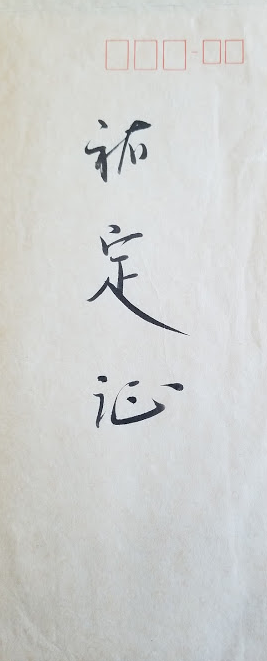
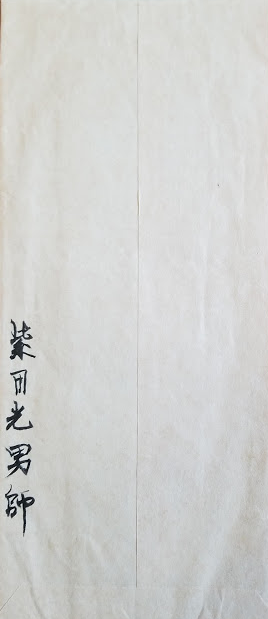
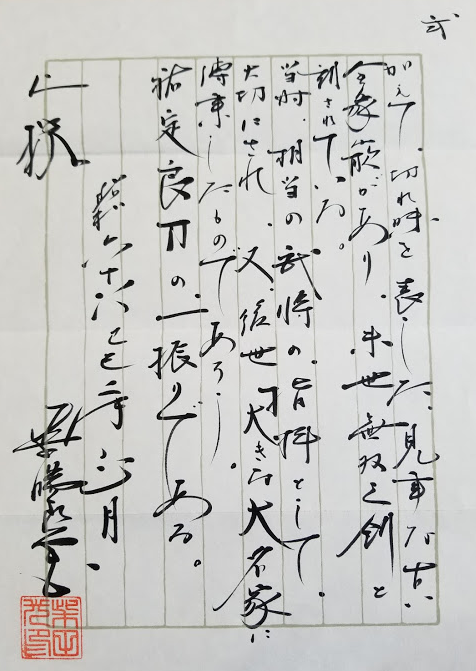
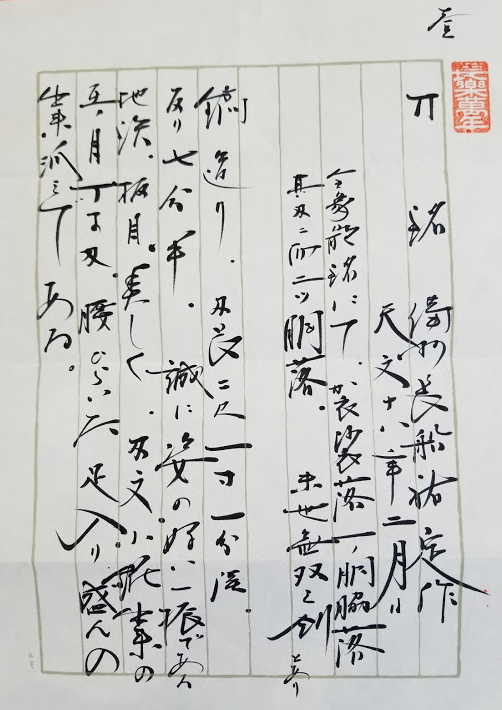
katana, mei: Bishū Osafune Sukesada saku
On a day of the second month Tenbun 18 (1549)
Kinzōgan-mei which states that the blade cut through a body with the kesagiri cut and
through each two bodies with the ichinodō and kewaki (wakige) cuts and that it is
therefore nicknamed Masse-musō no ken (末世無双之剣, lit. “unrivalled sword for the end of days”)
Shinogi-zukuri, blade length 63.9 cm, sori 2.3 cm. The blade is of a truly nice sugata. Its jigane is
a beautiful itame and the hamon is a gunome-chōji in ko-nie-deki that features koshi no hiraita
elements and plenty of ashi.
Apart from that, the kinzōgan-mei testifies to its magnificent cutting ability which earned it its
nickname “unrivalled sword for the end of days.” Many warlords were wearing swords like this at
that time and as it was taken care of so well, it can be assumed that it was later handed down
within a major daimyō lineage. An excellent Sukesada blade.
January 1989, year of the snake.
Yours sincerely, Shiba Zenkidō.
![]()
NBTHK Hozon certificate
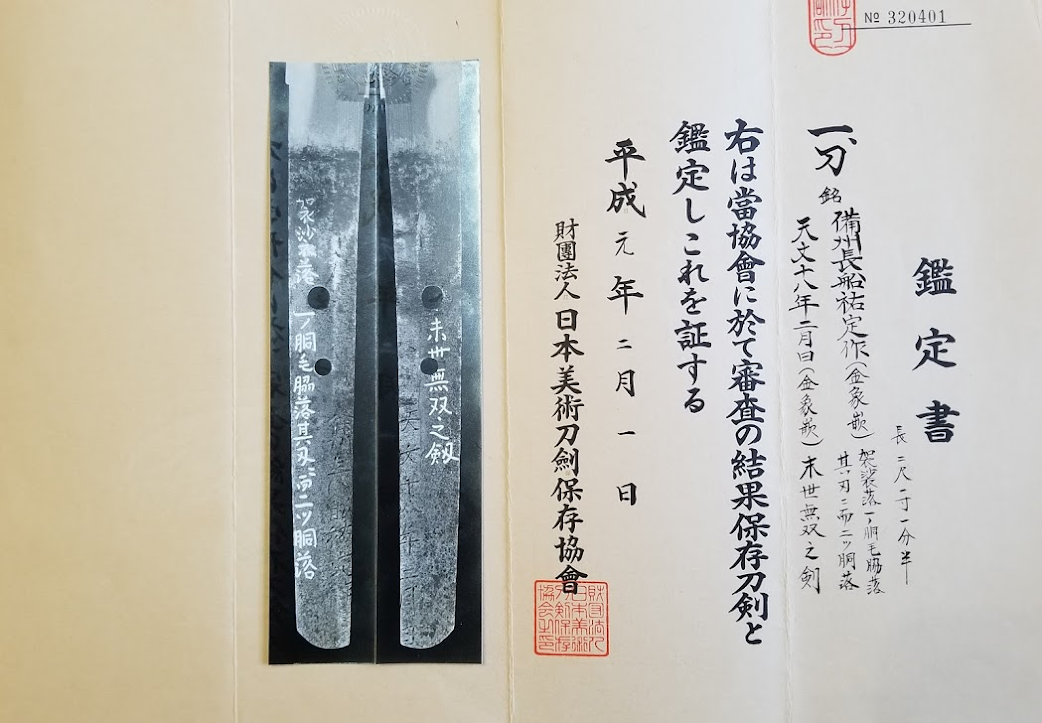
Certificate translation
K
ANTEI-SHO (鑑定書) - APPRAISALNo 320401
katana, signed:
Bishū Osafune Sukesada saku (備州⻑船祐定作) ‒“Made by Osafune Sukesada from Bizen province”Tenbun jūachinen nigatsu hi (天⽂⼗⼋年⼆⽉⽇‒ “A day in the second month Tenbun 18 (1549)”
kinzōgan-mei:
Kesa-otoshi ichi no dō kewaki-otoshi kono ha nite futatsu-dō otoshi(袈裟落⼀ノ胴⽑脇落其刃ニ⽽⼆ッ胴落) ‒“This blade cut through one body with the kesagiri cut and through each two bodies with the ichinodō
and kewaki (wakige) cuts” Masse-musōno ken (末世無双之剣) ‒“Unrivalled sword for the end of days”
nagasa ~ 63.9 cm
According to the result of the shinsa committee of our society, we judge this work as authentic
and rank it as hozon-tōken.
February 1, 1989
[Foundation]
Nihon Bijutsu Tōken Hozon Kyōkai, NBTHK (⽇本美術⼑劍保存協會)
![]()


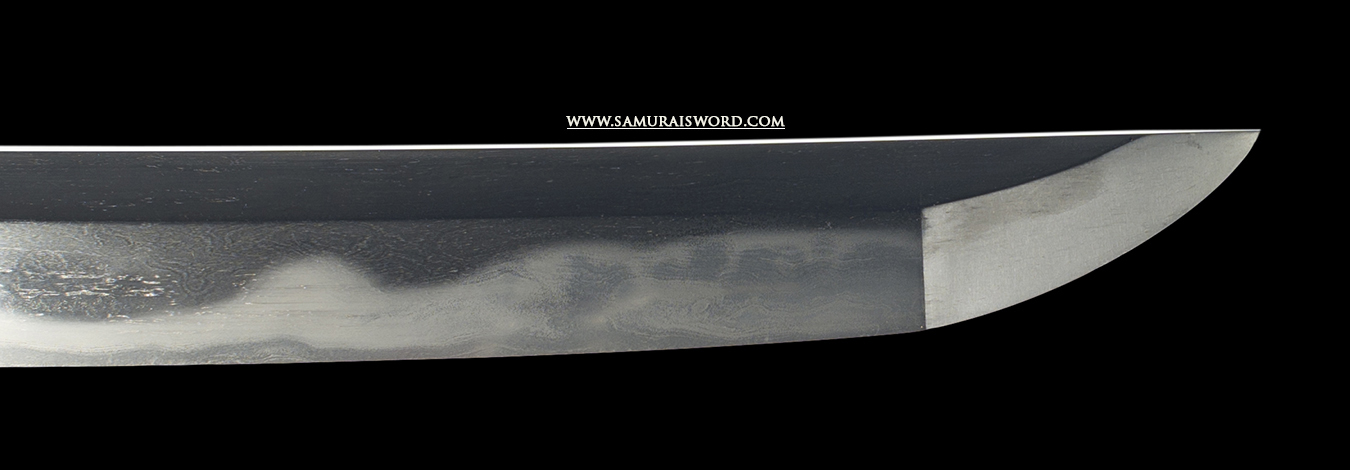
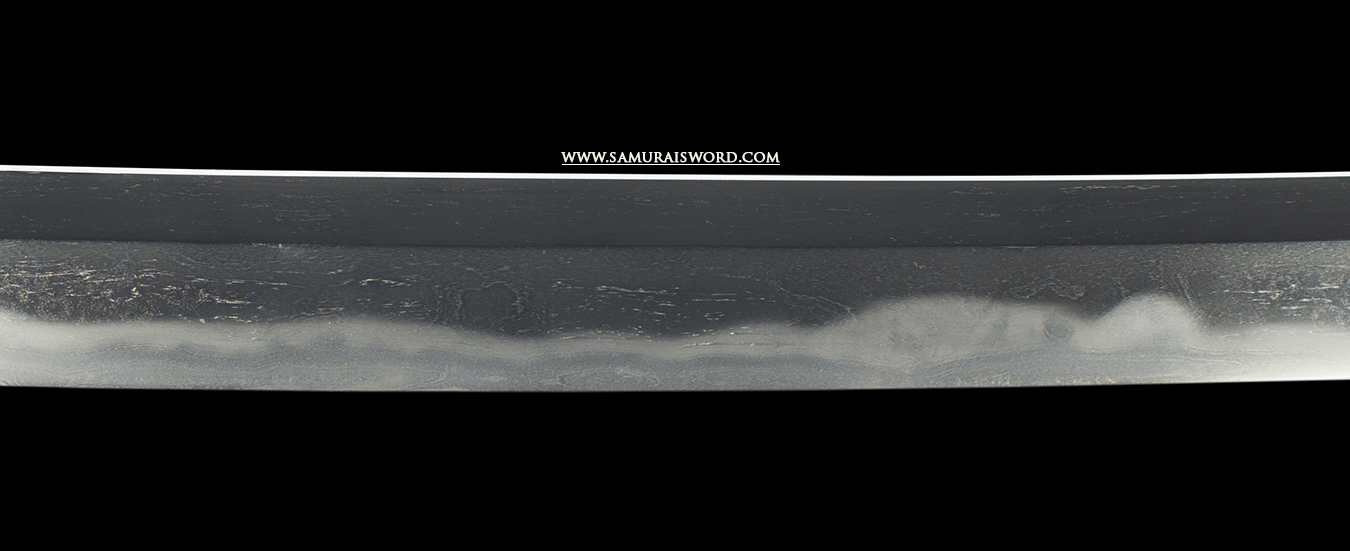
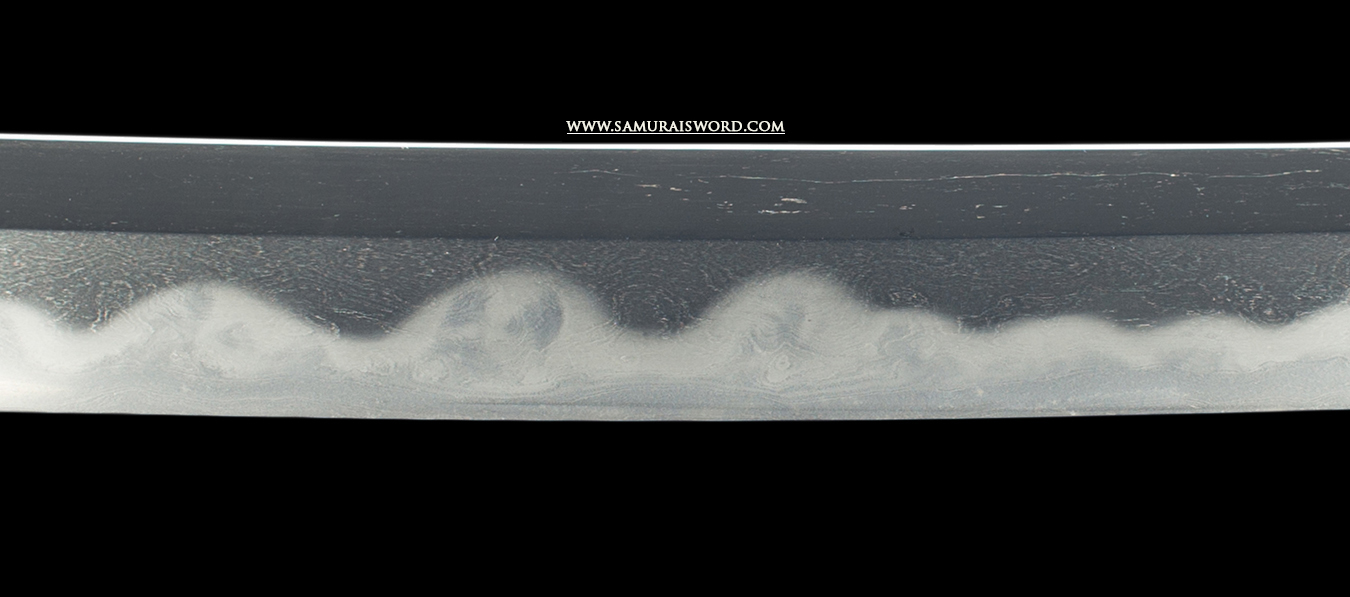
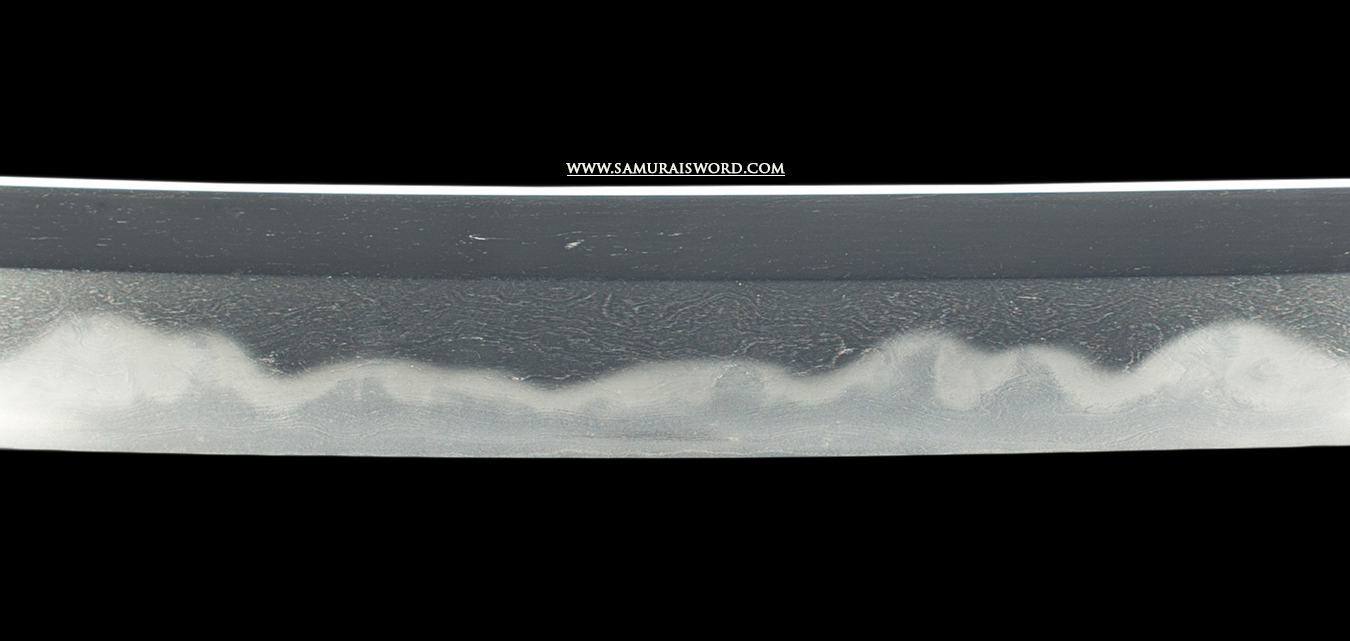
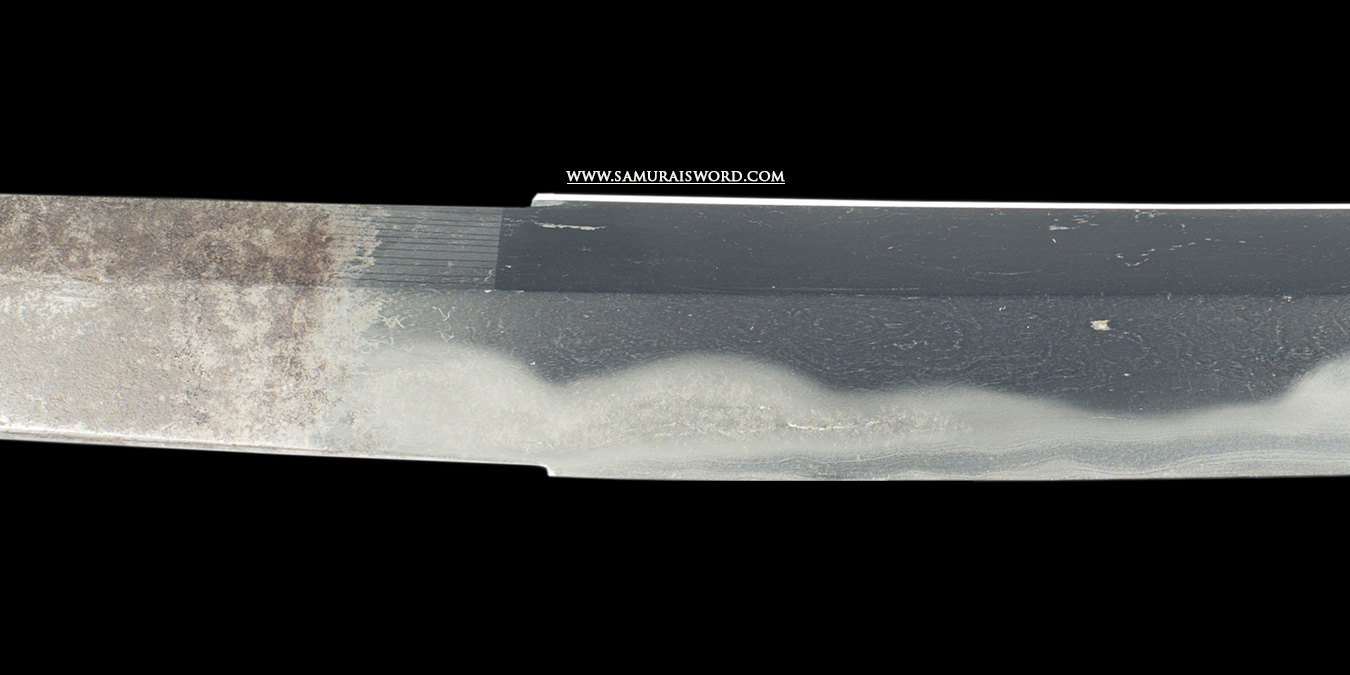


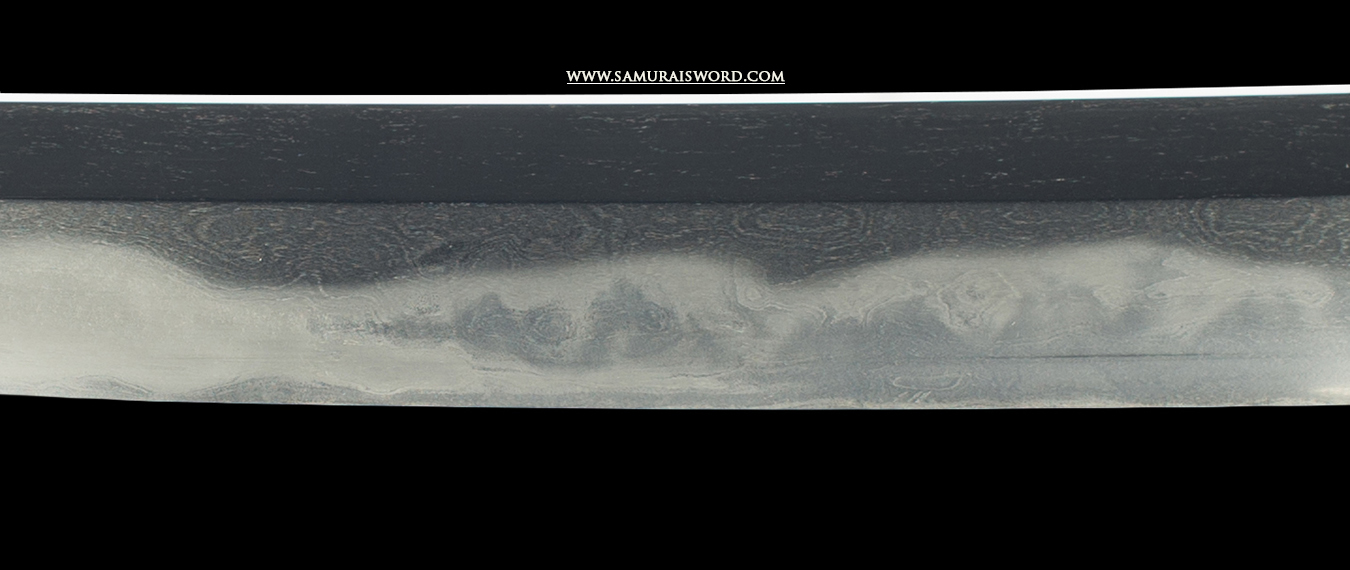
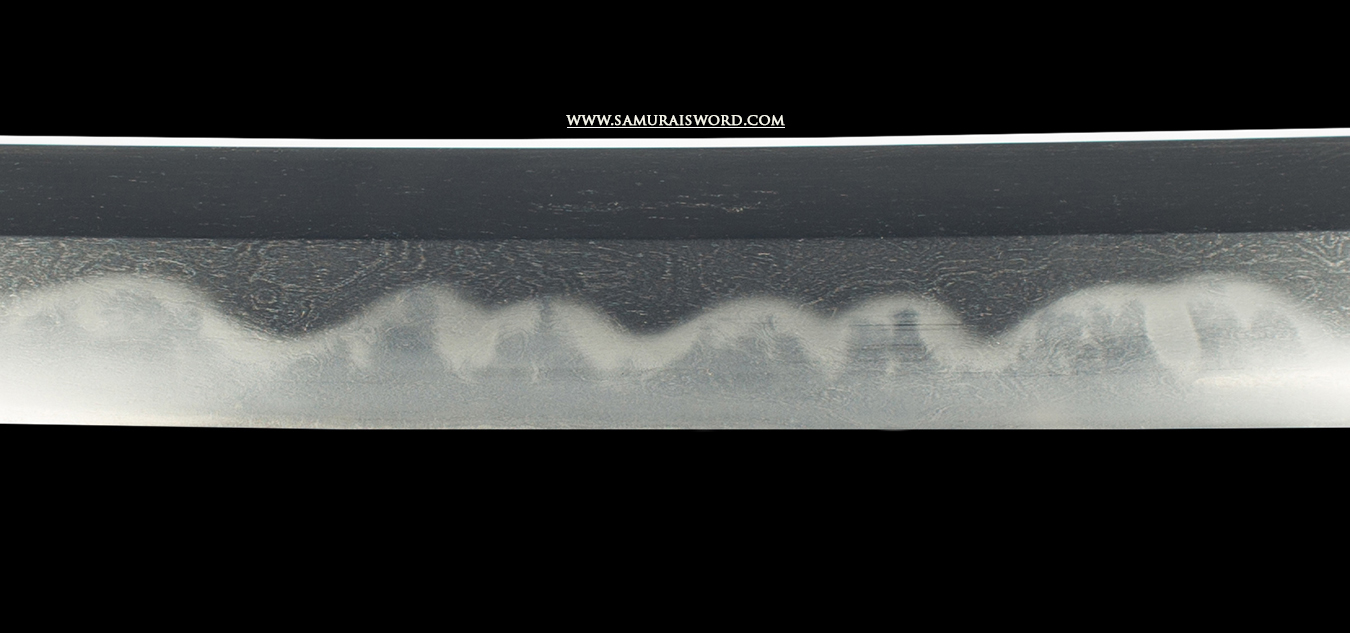
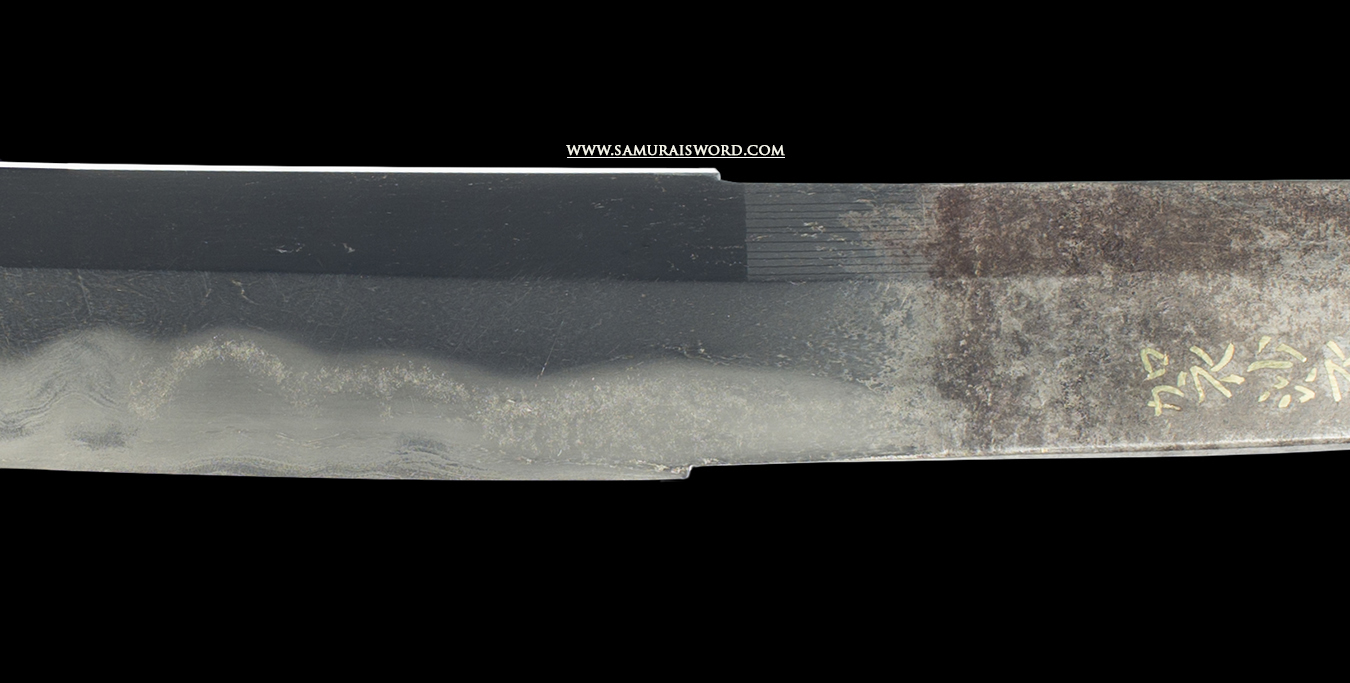


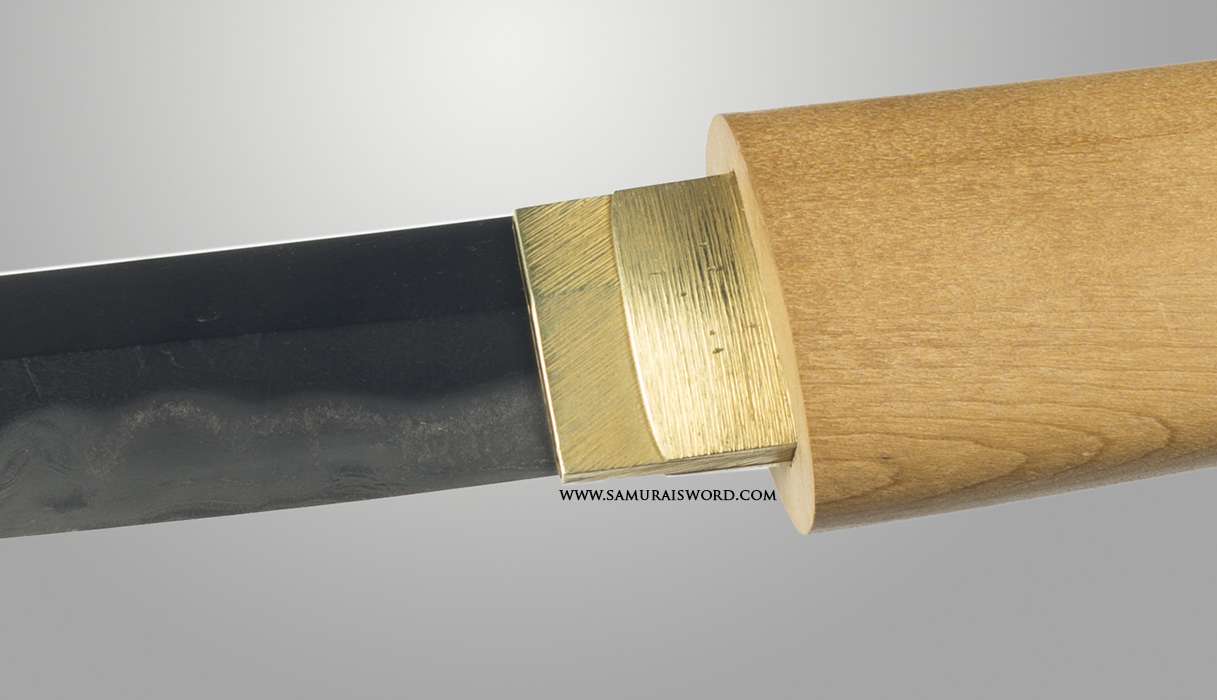
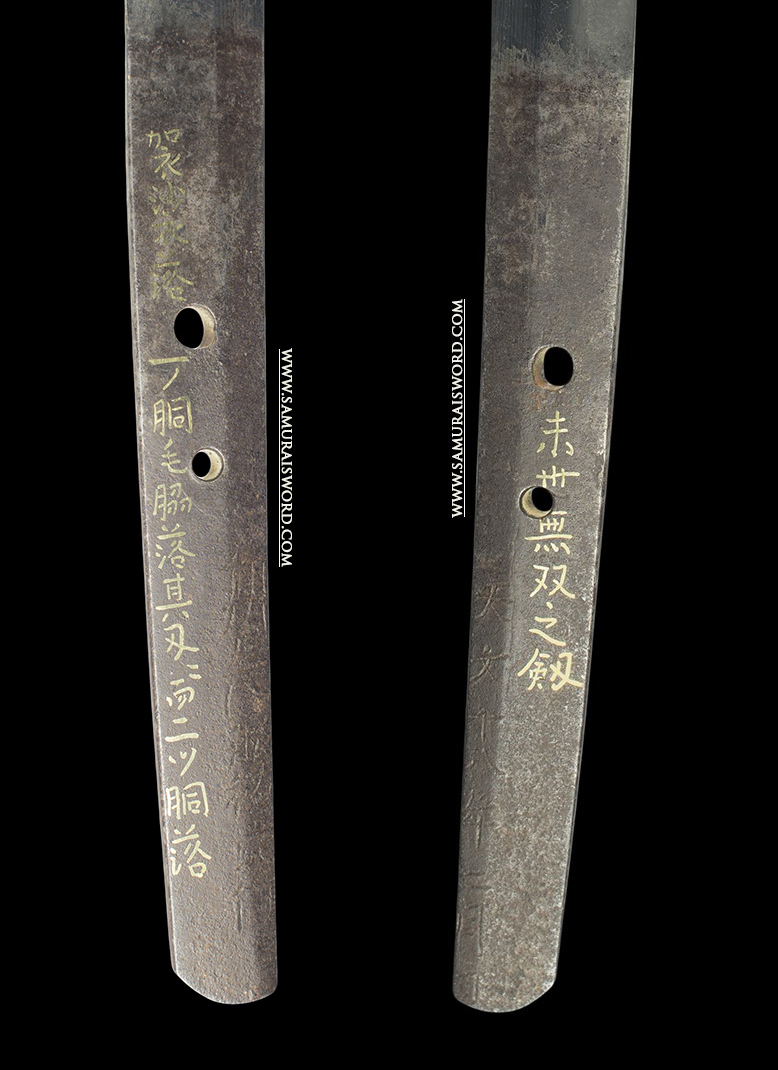
Signature (mei) Translation :
Signature: katana, mei; Bishū Osafune Sukesada saku (備州⻑船祐定作) “Made by Osafune Sukesada from Bizen province”
Tenbun jūachinen nigatsu hi (天⽂⼗⼋年⼆⽉⽇‒“A day in the second month Tenbun 18 (1549)”
Cutting test: Kesa-otoshi ichi no dō kewaki-otoshi kono ha nite futatsu-dō otoshi
(袈裟落⼀ノ胴⽑脇落其刃ニ⽽⼆ッ胴落) “This blade cut through one body with the kesagiri cut and through each two bodies with the ichinodō and kewaki (wakige) cuts”
Masse-musōno ken (末世無双之剣) “Unrivalled sword for the end of days”
Pictures and content may not be copied without the express permission of samuraisword.com © 2018